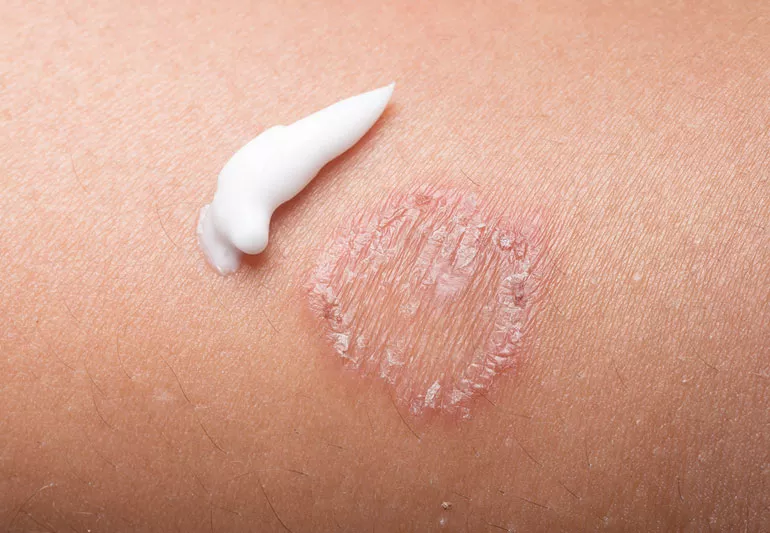The topical skin infection treatment market has witnessed substantial growth in recent years, valued at USD 15.6 billion in 2023. Rising cases of skin infections, coupled with increasing drug approvals, have driven this market across the globe, particularly in the 8 major markets. With a forecasted compound annual growth rate (CAGR) of 5.20%, the market is expected to reach a value of USD 24.5 billion by 2032. In this blog, we’ll explore the key market trends, major players, and future outlook for this rapidly evolving industry.
Market Overview: Rising Demand for Effective Skin Infection Treatments
Topical treatments for skin infections, including antibiotics, antifungals, and antivirals, are gaining popularity due to their accessibility and ease of use. Skin infections are increasingly common, especially in urban areas with higher pollution levels and lifestyle factors that exacerbate skin conditions. Additionally, the growing global elderly population, who are more prone to skin infections, continues to fuel the market’s growth.
According to recent reports, the rise in drug approvals for topical treatments has played a crucial role in driving market expansion. Moreover, advanced formulations, including nanotechnology-based creams and ointments, are emerging as significant innovations, allowing for better drug delivery and effectiveness.
Key Trends Shaping the Topical Skin Infection Treatment Market
- Innovative Drug Formulations
- Drug companies are focusing on improving the efficacy of topical treatments by using advanced technologies. Nanotechnology, for instance, has revolutionized drug delivery in the form of more potent and effective topical solutions. These innovations ensure targeted treatment, faster healing, and reduced side effects.
- Rising Antibiotic Resistance
- The increasing issue of antibiotic resistance is shaping the market by pushing pharmaceutical companies to develop more innovative treatments that bypass traditional antibiotics. This trend has spurred investment in non-antibiotic treatments, including antiseptic and alternative formulations for bacterial infections.
- Growing Demand for Over-the-Counter (OTC) Products
- There is a growing preference for over-the-counter (OTC) products due to their easy accessibility. With consumers prioritizing self-care, major players such as Johnson & Johnson and Mölnlycke Health Care AB are expanding their product portfolios to include a wider range of OTC antiseptic and wound care products.
- Focus on Sustainable and Natural Products
- Consumers are increasingly aware of the environmental impact of their healthcare choices. This has led to a growing demand for sustainable and eco-friendly topical treatments. Companies are responding by developing natural-based products and using biodegradable packaging, which has become a major trend in the skin infection treatment market.
Key Players in the Topical Skin Infection Treatment Market
Several prominent players dominate the topical skin infection treatment market, investing heavily in research and development (R&D) to launch new and innovative products. Let’s take a look at the key companies driving this market forward:
- Mölnlycke Health Care AB: Specializes in advanced wound care and antiseptic products designed to manage infections and promote healing.
- Coloplast Corp: Offers a comprehensive range of wound and skin care products, including advanced dressings and cleansers that prevent and treat infections.
- Johnson & Johnson, Inc.: Their topical skin infection portfolio includes antiseptics, wound care solutions, and medicated creams, focusing on making treatments easily accessible to the public.
Other significant players include Smith+Nephew, Convatec Inc., Cardinal Health, Dynarex Corporation, MIMEDX Group Inc., and 3M.
Market Segmentation: Diverse Treatment Options
The topical skin infection treatment market is highly segmented, catering to different infection types, drug classes, and end-users. Here’s a breakdown of the major segments driving market growth:
- By Drug Class:
- Antibiotics
- Antifungals
- Antivirals
- Corticosteroids
- By Type of Infection:
- Bacterial (e.g., impetigo, cellulitis)
- Fungal (e.g., athlete’s foot, ringworm)
- Viral (e.g., herpes simplex)
- By Route of Administration:
- Creams, ointments, gels, powders
- By End-User:
- Hospitals and Clinics
- Home Care Settings
- Retail Pharmacies
Challenges in the Topical Skin Infection Treatment Market
Despite the market’s growth, certain challenges persist:
- Antibiotic Resistance: As mentioned earlier, the overuse of antibiotics is leading to resistance, necessitating the development of more effective treatments.
- High Treatment Costs: Advanced topical treatments, especially those using new technologies, are often expensive, limiting their accessibility in certain regions.
- Regulatory Challenges: Drug approvals and stringent regulations in different countries may delay the launch of innovative treatments.
Future Outlook: A Promising Market with Innovation at its Core
The topical skin infection treatment market is poised for significant growth over the next decade, driven by innovation in drug formulations and the increasing prevalence of skin infections. By 2032, the market is expected to be worth USD 24.5 billion, with continued investment in research and development and strategic partnerships boosting the availability of effective treatments.
With antibiotic resistance becoming a pressing issue, companies are focusing on developing non-antibiotic solutions to combat infections. Additionally, the trend towards natural, eco-friendly products is expected to dominate the market, as consumers become more health- and environmentally-conscious.

